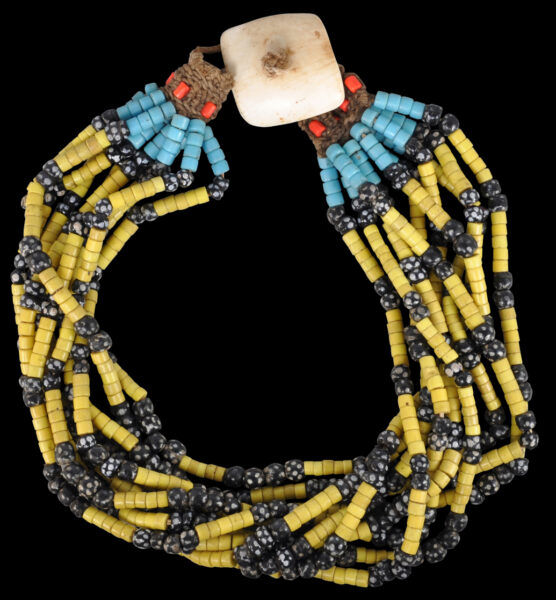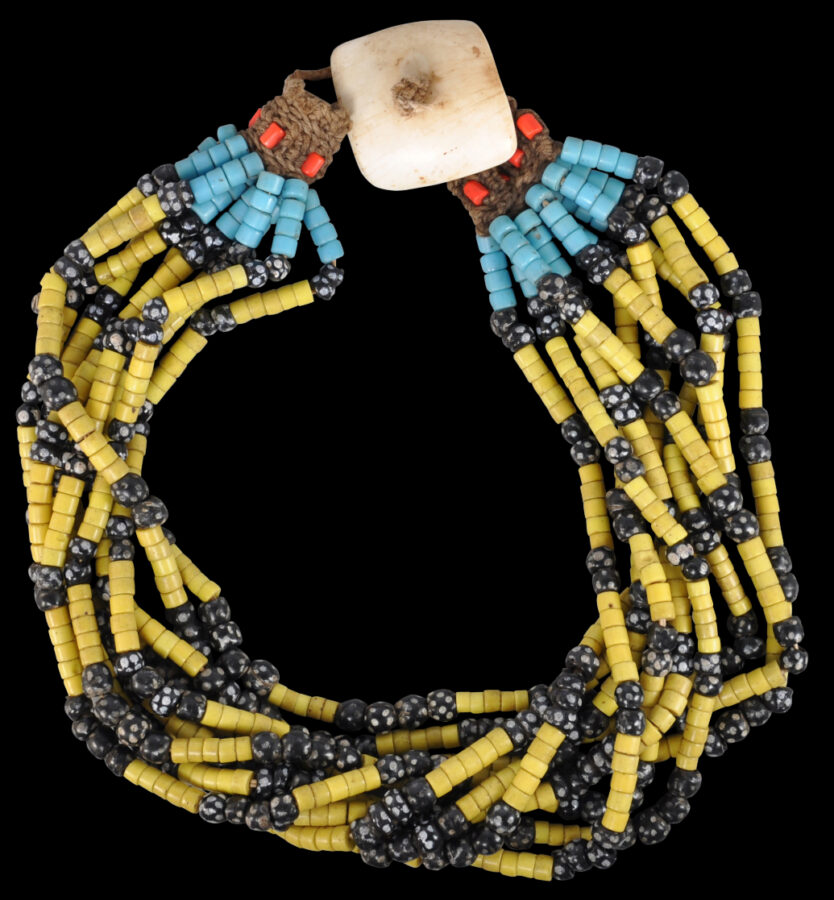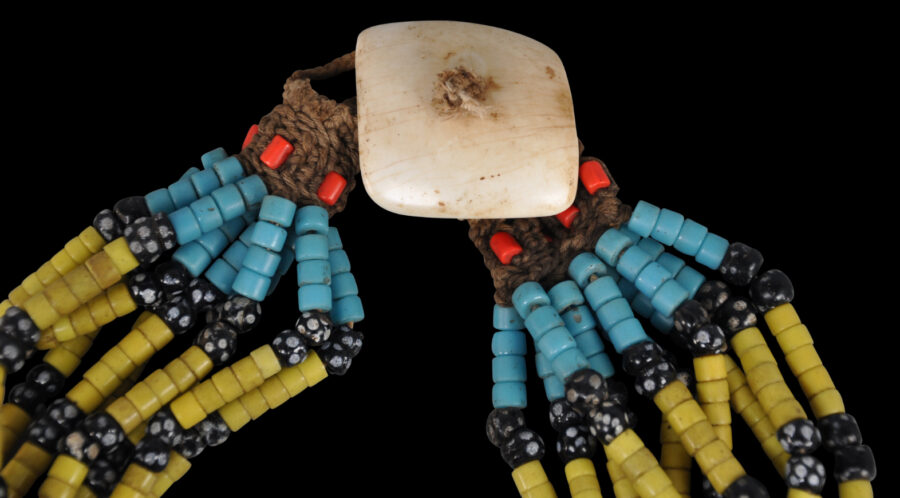This very fine Naga necklace comprises ten separate strands of yellow, turquoise-blue and red barrel beads, and round polka-dot black beads known as ‘skunk’ beads, secured on native twine and with a chank shell disk closure.
‘Skunk’ beads have been produced for export in Venice since the early 19th century. Each bead has a fine patina – it is clear that the necklace was worn and much used. The threading of each strand is incorporated into the woven cotton panel at each end. The other yellow and blue trade beads likely date to the first few decades of the 20th century.
Among the Nagas, necklaces that are thick with so many strands typically were worn by women; men wore sparser necklaces. And the thicker the necklace, the greater the presumed wealth of the wearer and her family.
The beads used in this necklace are most likely trade beads from Venice, France or China.
Similar examples are illustrated in Jacobs (1990, p. 313, 319).
The Naga are a tribal group concentrated in the border areas of north-eastern India and eastern Burma. They were attracted to rare goods that could be bartered from outside their region. Beaded necklaces were very popular as a show of finery but also as a portable means of displaying and carrying wealth. The components that went into making necklaces were regarded as currency items themselves. Beads and necklaces were accumulated as heirlooms and were passed as dowries.
The example here is in excellent, wearable condition.
References
Barbier, J. P., Art of Nagaland: The Barbier-Müller Collection, Geneva, Los Angeles County Museum of Art, 1984.
Daalder, T., Ethnic Jewellery and Adornment: Australia, Oceania, Asia, Africa, Ethnic Art Press/Macmillan, 2009.
Geoffroy-Schneiter, B., Asian Jewellery: Ethnic Rings, Bracelets, Necklaces, Earrings, Belts, Head Ornaments, Skira, 2011.
Jacobs, J., The Nagas: Hill Peoples of Northeast India, Thames & Hudson, 1990.
Saul, J.D., The Naga of Burma: Their Festivals, Customs and Way of Life, Orchid Press, 2005.
Shilu, A., Naga Tribal Adornment: Signatures of Status and Self, The Bead Museum, Washington, 2003.




